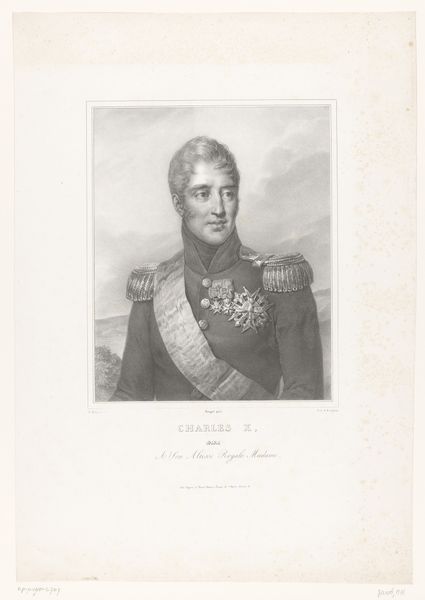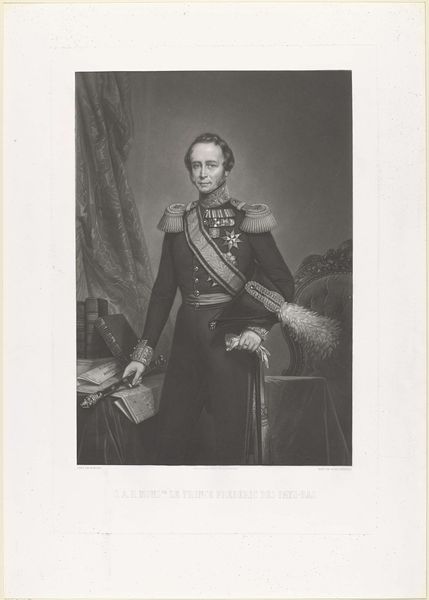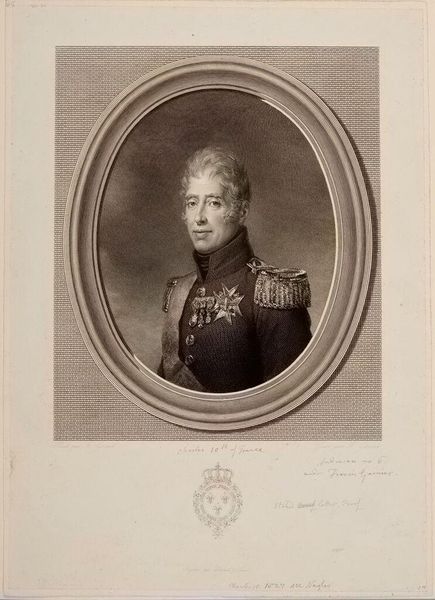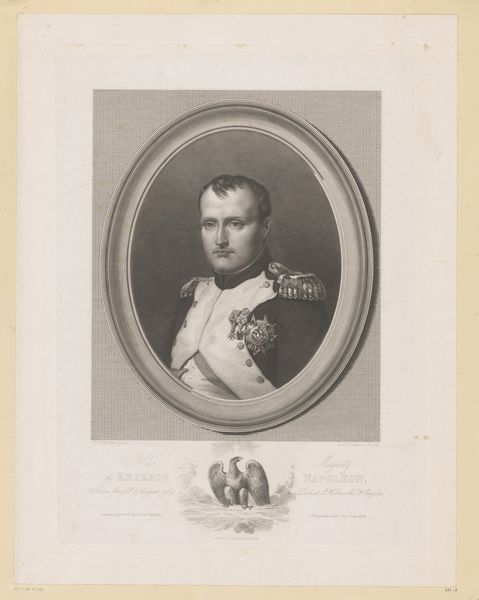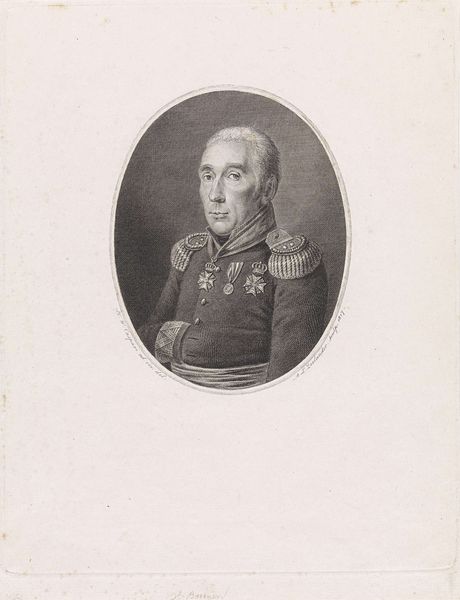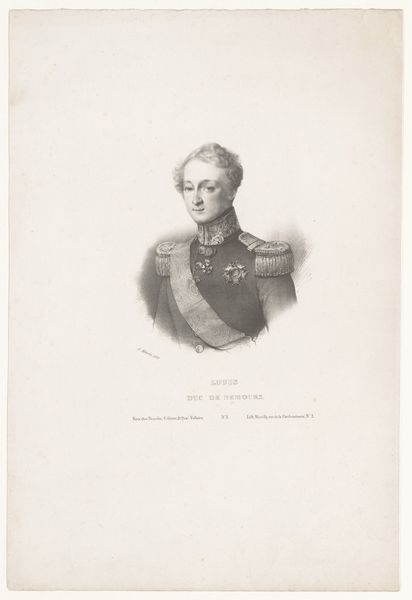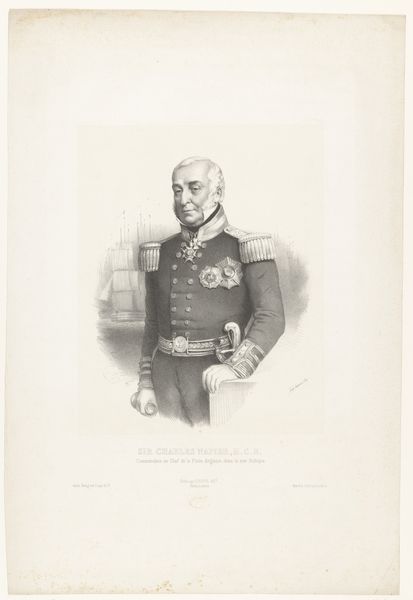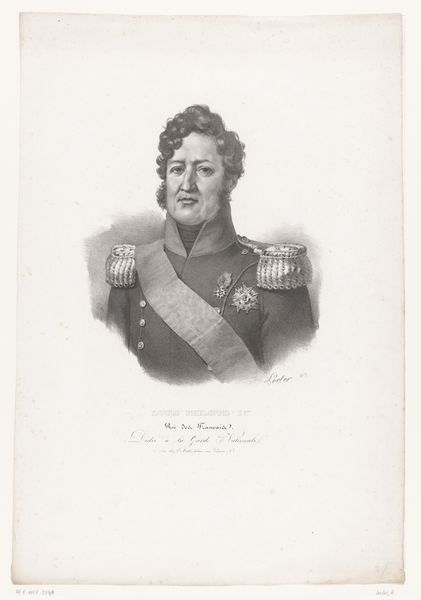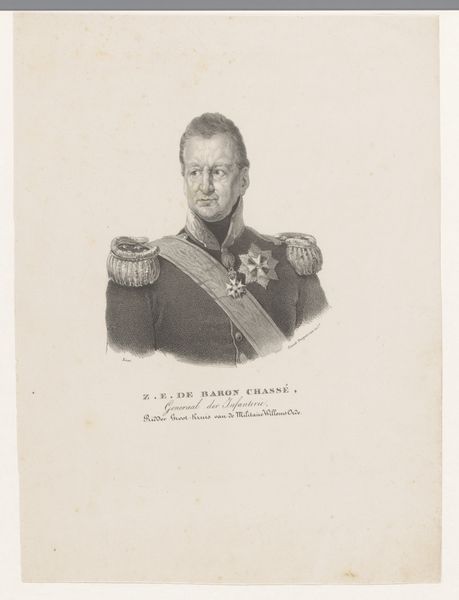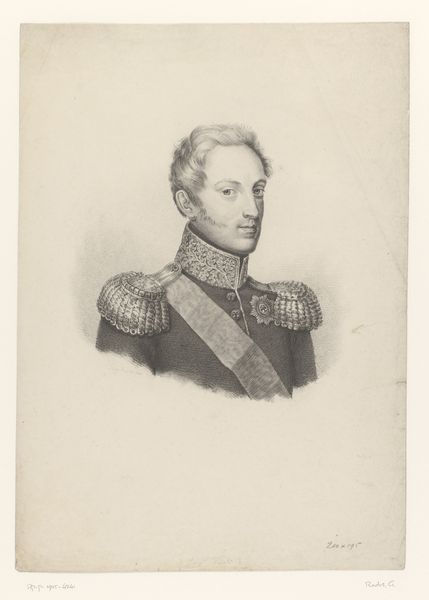
drawing, pencil
#
portrait
#
drawing
#
neoclacissism
#
pencil drawing
#
pencil
#
portrait drawing
#
history-painting
#
academic-art
Dimensions: height 514 mm, width 386 mm
Copyright: Rijks Museum: Open Domain
Editor: Here we have Jean-Baptiste Mauzaisse's 1824 pencil drawing, "Portret van Karel X, koning van Frankrijk" – or, "Portrait of Charles X, King of France." There's an austerity here, a formality captured in such delicate lines. What symbolic meanings or interpretations do you see within this portrait? Curator: Notice how Mauzaisse renders Charles X within that oval frame, placing him—and monarchy itself—in a tradition reaching back through portrait medals of antiquity, thereby claiming both legitimacy and an inherited cultural weight. The symbols emblazoned upon his chest–the sash, the star–these aren’t mere decorations. Editor: Right, they must signify something about his role, his power? Curator: Absolutely. The layering of these insignia suggests a man invested with divinely ordained authority, but it’s important to remember the era. The French Revolution’s symbols were not that far in the past. What associations do you make considering it is made entirely of pencil? Editor: It feels almost… fragile, like a sketch before the real thing. Curator: Precisely. Perhaps a deliberate choice, reflecting the perceived instability of the restored Bourbon monarchy? A pencil rendering of a King carries a different weight than a full oil painting, doesn’t it? It suggests impermanence, a tentative grip on power. Editor: I hadn't thought about the choice of material that way, about impermanence. It gives a completely different nuance to the piece. Curator: Symbols are slippery things; their meaning evolves with time and context. Examining them closely reveals much more than a simple likeness.
Comments
No comments
Be the first to comment and join the conversation on the ultimate creative platform.
